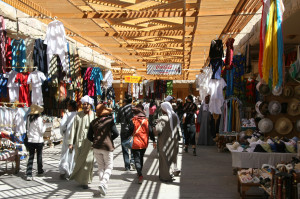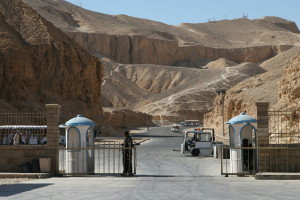Archaeotopia–The archaeological site as focus, expression and motor of collective identities
The research project (C-3-5) Archaeotopia investigates the production, appropriation and consumption of archaeological heritage spaces and their role in the formation of collective identities
Research focuses on non-western settings in northern Africa and the Near East, in which the concept ‘archaeological place’ and the ensuing practices and operations are ideational imports, and where their adoption and transformation by a wide range of widely different stakeholders in multiple, sometimes conflictive ways results in analytically particularly vibrant constellations. The aim of the project is to make a significant contribution towards understanding the complex dynamics underlying the creation and the development of archaeological heritage spaces in the named settings.
Archaeological heritage spaces attract the interest and involvement of a wide range of stakeholders, such as archaeologists and other heritage specialists, tourism entrepreneurs, international and national tourists, politicians, members of local communities etc. Their interplay sets off multiple processes of voicing, negotiating, mixing and interlinking cultural concepts and practices, which in turn shape the trajectory of the archaeological spaces. Although recent research has developed and adopted concepts like ‘heritagisation’ and ‘transculturality’ to grasp these phenomena, little work has been done to systematically describe and analyse such processes in relation to archaeological heritage sites in non-western contexts.
While the proclamation of the heritage status alone can turn archaeological places into an arena of manifold political and cultural expressions, they are often additionally subjected to severe physical transformations, whose aim it is to study and conserve archaeological remains, but also to generate ‘comprehensible’ appearances. Usually, archaeologists and other heritage professionals claim and enjoy privileged access to archaeological spaces for the sake of research and preservation. Based on the logics and ethics of their expert cultures, they introduce operations and regulations, which aim at a ‘correct’ handling of archaeological sites as spaces sui generis worldwide and thus exert strongly homogenizing tendencies. One major formal instrument of the dissemination of the heritage concept is the UNESCO world heritage scheme. It adds to the universal claims of much heritage practice, and it is worth investigating its dynamics on various national and local levels.
Archaeological spaces are crucial localitities for the (re)production of knowledge and the construction, presentation and negotiation of collective identities. Accordingly they can be impregnated with very divergent cultural messages or adapted for intensive ideological or commercial exploitation. At the same time, however, our research shows that in the course of their development, materially as well as culturally extremely heterogeneous archaeological sites are adjusted to standardized procedures of appropriation, which facilitate the contact of versed visitors with a temporally as well as culturally distant material world. Exploring an archaeological site on a foreign continent can thus become easier than plunging into a socially unfamiliar lived environment next door. These distinct routines make tourist visits a social practice sui generis, detaching the visited space from any social practices to which it may have previously been connected.
RELATED LINKS
Event: Archaeotopia: the Archaeological Site as Focus, Expression and Motor of Collective Identities
Research projects:
Archaeotopia, the archaeological site as focus, expression and motor of collective identities
Read more articles in TOPOI FEATURE



